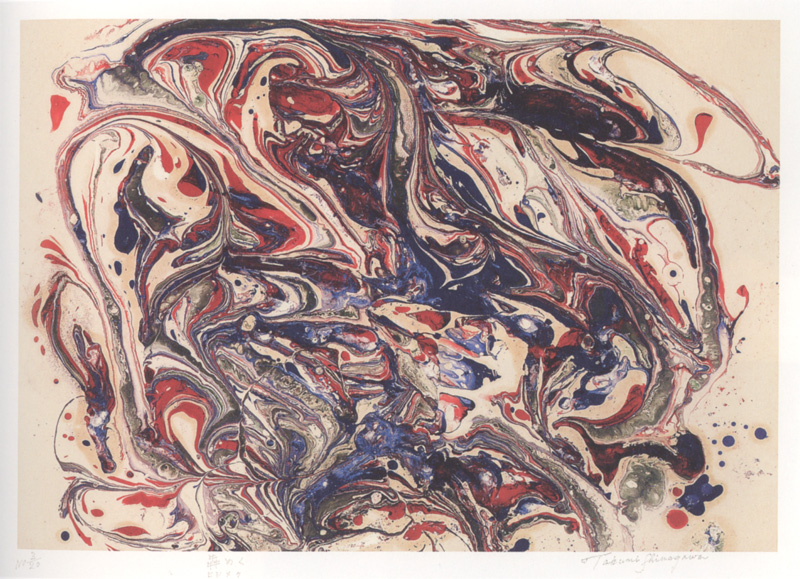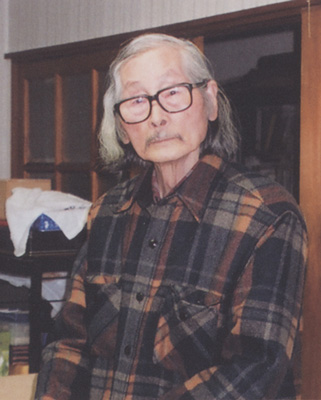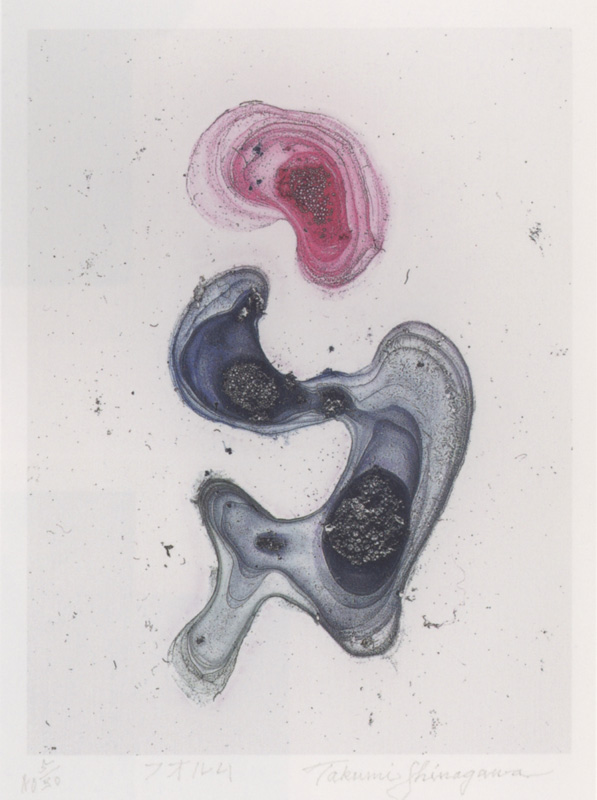Prints in Collection
IHL Cat. #363
Biographical Data
Biography
Shinagawa Takumi 品川工 (1908-2009)
Sources: Contemporary Japanese Prints, Kawakita Michiaki, Kodansha International Ltd., 1967, p. 185; Japanese Wood-block Prints, Shizuya Fujikake, Japan Travel Bureau, 1938, p. 166-167; Modern Japanese Prints: 1912-1989, Lawrence Smith, British Museum Press, 1994, p. 60; Modern Japanese Prints: An Art Reborn, Oliver Statler, Charles E. Tuttle Company, 1956, p. 71-75 and as footnoted.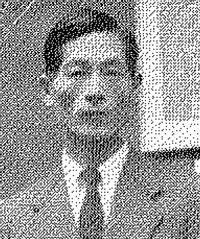 | Born in Niigata Prefecture in 1908, Shinagawa Takumi passed away in 2009. He created prints into his final year, contributing two prints to the 2009 College Women’s Association of Japan (CWAJ) 54th Print Show. (See photos below.) In 1928, he graduated from the Tokyo Prefectural College of Industrial Art (Tokyo Furitsu Kogei Gakko) in Tsukiji, Tokyo after studying metalwork and handicrafts. At a friend’s suggestion he showed some of his work, including a woodblock print, to Onchi Koshiro (1891-1955) and received Onchi’s encouragement. Subsequently he studied under Onchi, joined Onchi's Ichimoku-kai (First Thursday Society) and was to become "Onchi's right-hand man."1 An exhibition of his prints, mobiles and photographic works in 1945 brought him public recognition. Joining the Nippon Hanga Kyokai, he exhibited his color prints at the 1947 and 1948 Kokuga Kai Exhibitions, further enhancing his reputation. He exhibited |
While Shinagawa worked in many medias, including metal (creating numerous mobiles2) and photography, he is perhaps best known for his prints. He created both monocolor and multi-color prints and his style gradually moved from representational to abstraction. His mid-career abstract work is likened to Onchi's abstract work with its simplification of forms. His later works are mainly silkscreens rather than wood blocks.
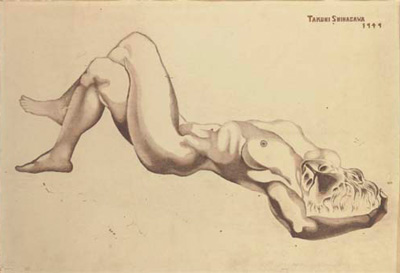
woodblock print
CWAJ 2009 Print Entries and Memorial Photo
Source: 54th CWAJ Print Show, Japanese Contemporary Prints 2009, p. 75, 104.
The Artist's Work
Source: Modern Japanese Prints: An Art Reborn, Oliver Statler, Charles E. Tuttle Company, 1956, p. 71-75.
Creating Works Unique to the Medium
Citing Picasso's use of "the unique qualities of the lithographic process to create something which could not have been done in any other medium," Shinagawa believed creative print artists should not attempt merely to reproduce images but to make individual and original woodblock prints of the highest quality, works that could not have been made in any other medium.Connection to Ukiyo-e
Statler states that Shinagawa “is attempting to realize in the modernidiom the essence of traditional ukiyoe as a woodprint. He is tryingto give modern expression to what he considers the basic fundamentalsof the woodprint, the qualities of line and color which are unique tothe use of wood…”The artist comments: “When I was beginning to make woodprints, I got hold of a fragment ofukiyoe. The more I studied it the more I was struck by the depth ofcolor in that print. When I held it up against the light it lookedlike stained glass. I realized then that a good print is much more thancolor laid on paper. The paint has to go into the paper, to becomepart of the paper. Often the pigments should be mixed in the paper: byapplying one over another to get a living, glowing color deep in thepaper.”
Modern Japanese Prints
“Nobody in my house wears kimono,” he says. “It would be ridiculous for me to make pictures of kimonoed beauties. Japanese art can’t stay aloof from world currents, but that doesn’t make a Japanese artist any less Japanese. And I certainly don’t agree that, in becoming universal, Japanese art has been downgraded."Technique
In his abstract prints Shinagawa has developed another way of creatinga line. For example, he will print red on top of yellow. Where he hascut away the red block, a line of yellow remains.“Let meexplain it this way,” Shinagawa says. “If I draw or visualize a lineon a block and then cut away the wood on both side to leave that line,I feel that I am merely reproducing a line I previously created. Butif I take my chisel and gouge out the line, I feel that my hand and mymind are working together in an act of creation, the same way as apainter with a brush. It’s an entirely different kind of feeling,spontaneous and free.”
Like Onchi, Shinagawa has experimented widely with paper blocks, andmany of his prints are made with paper blocks or a combination of woodand paper blocks. He is particularly interested in the texturaleffects he can obtain by making blocks from different papers. Forexample, a paper of uneven thickness will give a mottled effect. Inprinting from paper blocks Shinagawa usually fastens the blocks to aboard and prints the same way he would from a wood block, using a kento [registration mark] on the board. If he wants a lighter effect he may lay the print on itsback, place the paper block on top, and print with a thin paper betweenthe block and his baren.
Shinagawa usually limits his editions toabout twenty, but in printing from paper blocks he can make only fourprints at a time because the blocks swell so rapidly and must be putaway to dry before they can be used again. Of course the same problemis common to wood blocks but to a much lesser degree: a printer can getabout two hundred impressions from sakura blocks before the swellingdestroys the registry.
For his woodblocks he uses plywood, facedwith shina for his shallow-cut monocolor prints and with rawan when heis cutting bold masses.
He prints on torinoko paper. Oftenhe gives it additional thickness by pasting a sheet of thin, toughtissue on the back. He sizes his own paper.
Collections
Museum of Fine Arts, Boston; Fine Arts Museums of San Francisco; Los Angeles County Museum of Modern Art; Harvard Art Museum/Arthur M. Sackler Museum; Art Gallery of Greater Victoria; Art Gallery of New South Wales; Carnegie Museum of Art; Art Institute of Chicago; National Museum of Modern Art, Tokyo; National Museum of Modern Art, Osaka; The British Museum; Brooklyn Museum; Oxford Museum, England1 Japanese Prints During the Allied Occupation 1945-1952, Lawrence Smith, British Museum Press, 2003, p. 35.
2 In 1970 Shinagawa authored the book Charm in Motion: A Collection of Mobiles, Japan Publications, Inc. which is a "how-to" book on mobile construction.
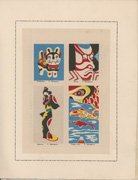
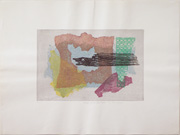
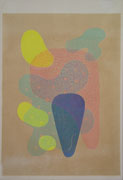
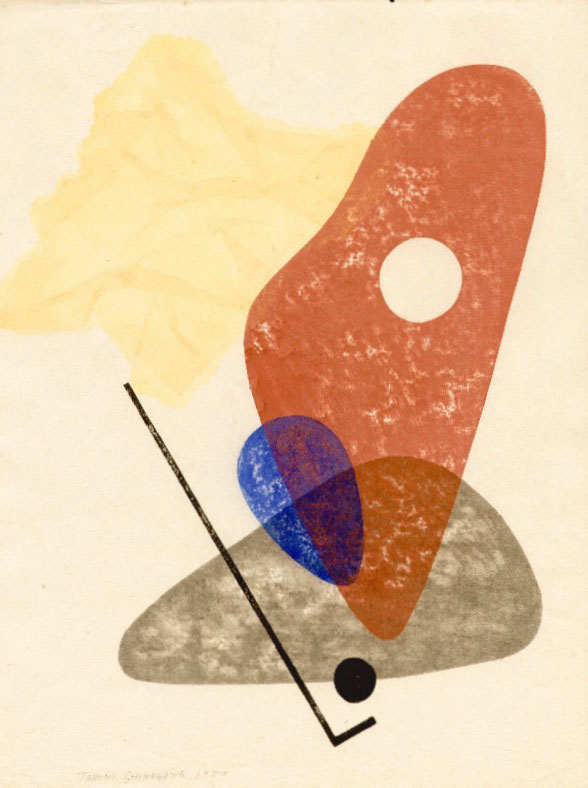
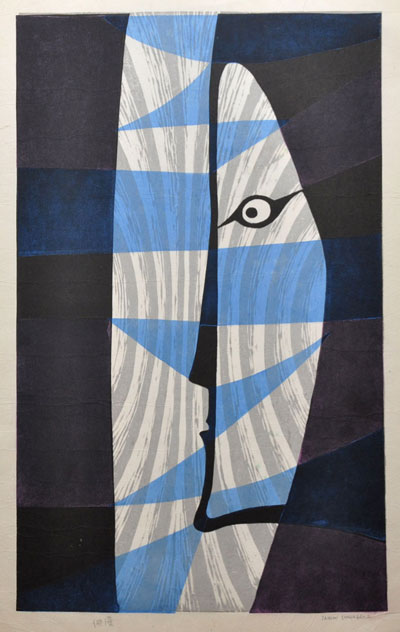
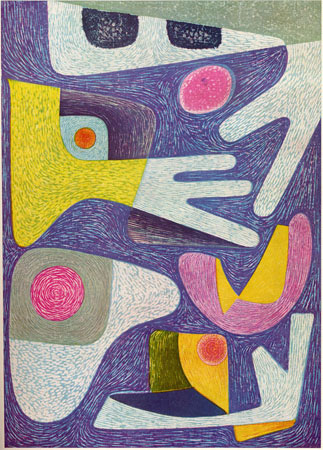
 Tangle of Color, 2005 silkscreen
Tangle of Color, 2005 silkscreen